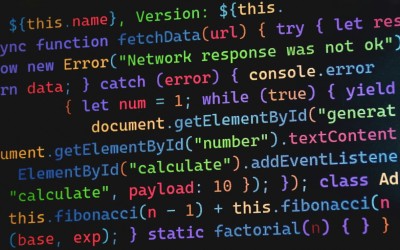The integration of artificial intelligence (AI) into classrooms is one of the most significant educational developments of the 21st century. This transformation prompts educators, parents, and policymakers to question whether AI is a beneficial tool for enhancing learning experiences or a potential detriment to traditional teaching methods. As technology becomes increasingly embedded in educational practices, understanding its impact is crucial for shaping the future of learning. This article explores the multifaceted role of AI in classrooms, examining its potential advantages and pitfalls to determine whether it serves as a help or a harm.
AI technology offers an array of benefits that can potentially revolutionize education. One of its most significant advantages is the ability to provide personalized learning experiences. Traditional education often struggles with a one-size-fits-all approach, where individual student needs can be overlooked. AI addresses this challenge by analyzing data to tailor educational content to each student's learning style, pace, and level of understanding. Through AI-driven platforms, students can receive customized exercises and feedback, enabling more effective and efficient learning.
Furthermore, AI can significantly enhance accessibility in education. For students with disabilities, AI tools can offer critical support. For instance, speech recognition software can assist students with dyslexia, while voice-activated systems can help those with mobility impairments. Additionally, AI can facilitate language translations for students who are non-native speakers, thus breaking down barriers to learning and fostering inclusivity in the classroom.
AI also plays a role in automating administrative tasks, which can alleviate the workload for teachers. Grading, scheduling, and even attendance tracking can be streamlined through AI systems, allowing educators to focus more on instructional activities and student engagement. This shift not only enhances productivity but also improves the quality of education by enabling teachers to dedicate more time to developing creative and interactive lesson plans.
Despite its potential benefits, AI in education is not without its challenges and limitations. One significant concern is the risk of exacerbating educational inequalities. While AI can personalize learning, access to AI technologies often depends on a school's resources. Schools in underfunded areas may struggle to implement advanced AI systems, leading to a digital divide that widens the gap between affluent and disadvantaged students. Ensuring equitable access to AI tools is essential to prevent amplifying existing inequalities in education.
Additionally, there is the issue of data privacy and security. AI systems rely heavily on data collection to function effectively, raising concerns about how student data is managed and protected. The potential for data breaches and misuse of personal information poses a significant risk, necessitating robust privacy policies and regulations to safeguard students' rights.
Another critical concern is the potential impact of AI on the teacher-student relationship. While AI can automate various tasks, there is a fear that over-reliance on technology might diminish the human element of teaching. The personal interaction between teachers and students is a fundamental aspect of learning, fostering not only academic development but also social and emotional growth. Teachers play a crucial role as mentors and role models, and while AI can support educational processes, it cannot replace the unique value of human connection in education.
The deployment of AI in classrooms also raises several ethical considerations. One of the primary ethical dilemmas involves the decision-making processes embedded within AI systems. Algorithms are not immune to bias, and if the data used to train these systems is skewed or flawed, AI can perpetuate and even exacerbate existing biases. This issue is particularly concerning in educational settings, where biased algorithms can unfairly impact student assessments and opportunities.
Moreover, there is the question of accountability in an AI-driven educational environment. When AI systems make decisions that affect students' academic paths, it is crucial to establish clear accountability structures. Educators and administrators must ensure that AI tools are transparent and that decisions can be explained and justified, maintaining trust in the educational system.
Looking ahead, the future of AI in classrooms depends on how these challenges and ethical considerations are addressed. To maximize the benefits of AI while minimizing its risks, a balanced approach is necessary. This involves continuous dialogue among educators, technologists, policymakers, and communities to develop AI systems that align with educational goals and values.
Investing in teacher training is also essential to ensure that educators are equipped to integrate AI effectively into their teaching practices. Teachers need to understand how AI tools work, their potential benefits, and their limitations. By empowering teachers with the knowledge and skills to use AI judiciously, the educational system can harness technology's potential while maintaining the central role of educators.
Moreover, fostering collaboration between AI developers and educators can lead to more effective and ethical AI applications in education. By involving educators in the design and implementation of AI tools, developers can create systems that are more attuned to classroom realities and educational needs.
The question of whether AI in classrooms is a help or harm is complex, with no straightforward answer. AI holds the promise of transforming education through personalized learning, increased accessibility, and streamlined administrative processes. However, it also presents significant challenges, including potential inequalities, data privacy concerns, and ethical dilemmas.
To navigate this evolving landscape, a thoughtful and collaborative approach is vital. By addressing these issues and working towards equitable and ethical AI integration, the educational community can harness technology's power to enhance learning experiences while safeguarding the values and relationships at the heart of education. Ultimately, the role of AI in classrooms will depend on our collective ability to shape it as a tool that complements and enriches, rather than replaces, traditional educational practices.




